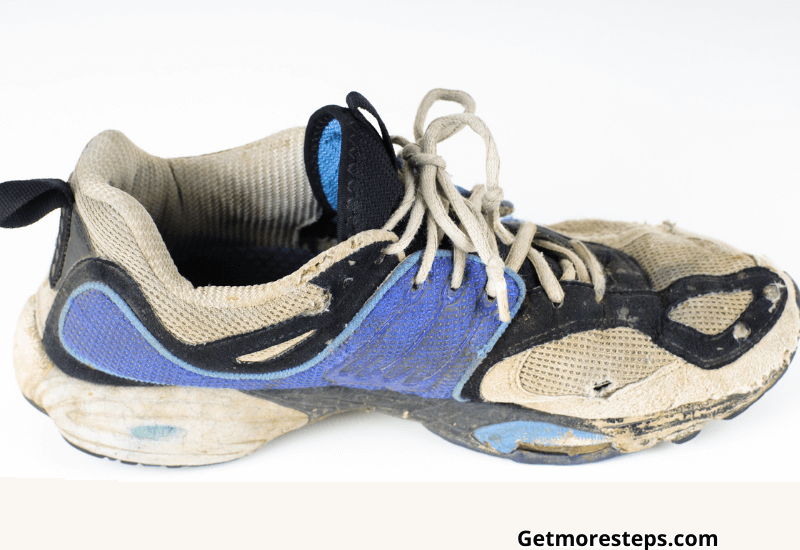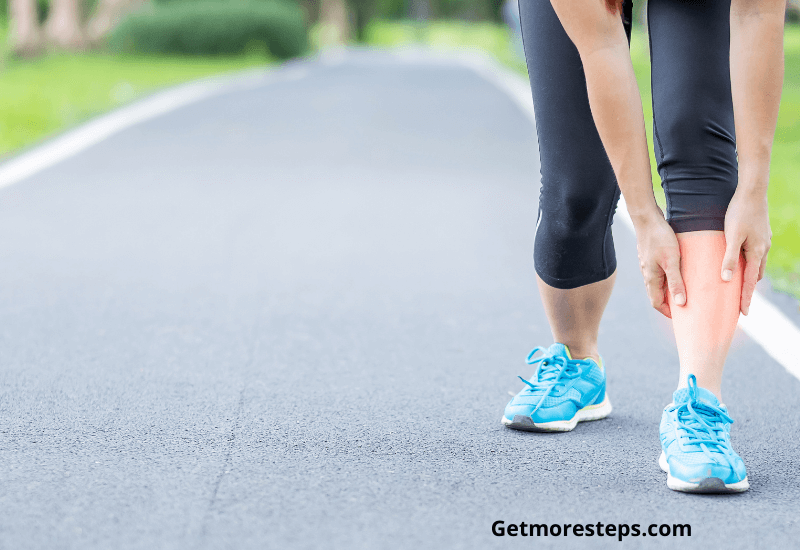Walking with shin splints, is it good? And the answer is yes, it’s okay, but it will be harder for you to walk, and if it worsens, it could lead to severe damages. You need to take shin splints very seriously and treat them as soon as possible. So if you are used to power walking, you will have to slow down for a while. There are several methods to treat shin splints, but you should always see your podiatrist before beginning anything. Now let’s see how you can take care of shin splints and get back on your feet as fast as possible.
Contents
- 1
- 2 What Are Exactly Shin Splints
- 3 How Many Types of Shin Splints Are There?
- 4 What Causes Shin Splints?
- 5 What Are the Symptoms of Shin Splints?
- 6 How Long Last Shin Splints?
- 7 How to Get Rid of Shin Splints
- 8 Can You Walk With Shin Splints?
- 9 How to Prevent Shin Splints?
- 10 Best Exercises for Shin Splints
- 11 Conclusion
What Are Exactly Shin Splints
Shin splints, which is medically known as medial tibial stress syndrome, is an overuse injury. Shin splint causes pain along the shin bone (tibia), and it’s often related to damage to the tendons, muscles, and bones. Anyone can get shin splints, but usually, it occurs most frequently in athletes like dancers, footballers, runners, power walkers, and military recruits. Studies show that 30 to 70 percent of runners get injured, and 35% of those injuries lead to shin splints.
How Many Types of Shin Splints Are There?
There are three types of shin splints: Medial Tibial Stress Syndrome, Stress Fracture, and Compartment Syndrome.
Let me explain what are there,
Stress Fracture
This fracture is due to an overuse injury that happens because of repeated stress to the bone, which causes a small fracture.
The pain is located along the front of the tibia, more precisely near the middle. You know you have stress fracture when the pain is constant and increases with exercise. The discomfort amplifies suddenly and becomes severe. This pain is too painful to continue your work out.
Compartment Syndrome
There are several muscle compartments in your lower leg, and those muscles are held in a lining called a fascial sheath. When this part of the leg is inflamed or injured by direct impact, these muscles can become swollen and painful.
You know you have compartment syndrome when you feel pain along or inside the tibia and in your muscles at your lower leg’s anterior (front). The pain usually increases at the start of your workout and decreases when you stop. In some cases, the muscle that is affected can feel asleep and weak. If you experience tingling in the legs, you should seek medical attention.
Medial Tibial Stress Syndrome
This medial tibial stress is often caused by a sudden change in the type of activities or exercises intensity—this forces the muscles of the lower to pull on the tibia lining. You will generally feel the pain along the anterior (front) or inside of the leg. It becomes painful when touching the affected area and also varies in intensity. The pain occurs as you begin to exercise and likely decrease as you warm up. Usually, the discomfort worsens in the morning and after a workout.
What Causes Shin Splints?
Shin splint is often caused by putting excessive pressure on the muscles, and tissues connecting the shinbone. Other factors can cause shin splints like adding intensity, distance, and duration to the workout drastically without any preparation. Wearing worn-out shoes that lost their shape and shock-absorbing ability doesn’t provide any protection anymore. This puts you more at risk of getting shin splints, especially if you walk on uneven terrains. Severe overpronation, arch abnormalities, a high body mass index (>20.2 BMI), or unequal legs can also lead to shin splints.

What Are the Symptoms of Shin Splints?
The most common symptoms of shin splints are pain, throbbing, or tenderness inside or outside of the shin, which often radiates along the front part of the leg. The pain is due to the inflammation of the tendons inside of the lower leg. If you feel pain when pressing on the tender area, it’s often a symptom of shin splints. The discomfort of shin splints is most severe at the beginning of your workout and disappears during your training once the muscles are loosened.
How Long Last Shin Splints?
It can take three to six months, depending on the severity of the injury, to heal shin splints. After a period of two to four weeks of rest, if there is no pain anymore, you can start walking exercises again, but without forcing. If you feel the pain comes back, stop right away your workout to avoid doing more damage to your tibia and rest until it’s completely gone. You’ll know your shin splints are cured when you can power walking or exercise without feeling any pain in the leg. If the pain doesn’t go away, you will have to see your doctor as soon as possible.
How to Get Rid of Shin Splints
Shin splints can be frustrating because it prevents you from exercising and doing your daily tasks. So you need to take care of it fast. The first thing you have to do is stop certain activities that put pressure on your legs like running, power walking, or aerobic. That doesn’t mean you can’t do any sport, quite the contrary. For instance, you can practice low impact exercises that are more gentle on the legs like swimming or biking. These cardio workouts make other muscles of your body work and maintain your fitness level. To get back on your feet once and for all, here is what you need to do:
Ice the inflamed area 3 times a day for 15 minutes. This will help reduce pain and inflammation in the legs and will also speed up the healing process.
Pain killer: Medication like aspirin, Ibuprofen, Advil, or Tylenol will alleviate pain and inflammation in the affected area. I don’t really like this method, but sometimes there are no choices and once in a while, it doesn’t hurt.
Ice after each training: If you continue to walk or exercise, make sure to ice the area after finishing your session.
Do calf stretching; this will improve your calf strength, stabilize the tibia with each impact, and decrease pain. Stretching is very effective, so try to be consistent.
If all of these suggestions above don’t help and the pain persists, you better stop all workout and rest until it goes away completely. In any way, you should always see your doctor and follow his advice.
Can You Walk With Shin Splints?
It’s often recommended to rest for a while to heal from shin splints faster and more effectively. But that doesn’t mean you need to become inactive. Not at all. You can definitely walk while you have shin splints, but slowlier than you are used to it. Power walking is more intense and can put stress on your tibia, which you want to avoid. However, you should always listen to your body. If your leg hurts while you walk, don’t force yourself and slow down or stop if you need to.
However, physiotherapists suggest to walk on a treadmill with an incline set of 5 or 6; it makes the muscles work less. They also recommend walking for 5 to 10 minutes and then do some calf stretching like those listed below. Do it until you have little or no pain at all. As the pain decreases, add time to your walking session and gradually remove some stretching exercises.
How to Prevent Shin Splints?
If you just start walking or exercising and want to make sure you are doing things correctly, or you’ve had shin splints in the past and want to avoid having them again, try these suggestions below.
Do Yin Yoga exercises: Whether you run, walk or jump, if you want to strengthen your muscles and prevent any injury, I would highly recommend you to start yin yoga. This form of yoga will not only protect your body from injuries, but it will also relax your mind and your soal.
Take it easy: Try not to increase the distance by more than 10 percent weekly. Add steps progressively, and most importantly, listen to your body and rest when it requires to do so. Take one or two rest days per week. This allows your muscles to rest and recuperate, thus reducing the risk of getting shin splints.
Get some vitamin D: Studies show that vitamin D improves muscle strength. If you expose yourself in the sun for about 15 to 25 minutes per day, you’ll get a fair amount of vitamin D. Also, try to eat food containing vitamin D like salmon, tuna, eggs, mushrooms, soy milk, tofu, orange juice, cereals, and more.
Wear good shoes: Overpronation is a common cause of shin splints, so analyze your gait and invest in an appropriate pair of walking shoes. Stability or motion control shoes are best for overpronators. These shoes have stability features on the arch side, which helps distribute the impact and prevent injuries. Also, make sure to replace your shoes when they wear out. Usually, athletic shoes have a short lifespan and need to be replaced every 300 to 600 miles.
Stretch your calves: It’s important to do some stretching before and after your workout to prevent shin splints. Do some calf exercises before and after walking or running.
Avoid hard surfaces: Exercising on hard terrains increases shocks on your joints, muscles, and bones. Try to walk once or twice a week on smooth surfaces like treadmills, grass, or sand.
Best Exercises for Shin Splints
Band exercise:
Use an exercise band to stretch and strengthen your muscles and tendons in the front of your leg.
Secure one end of the band to a heavy table, chair, or sofa. Place the other end of the band around your foot. Stretch the band with your foot by moving up and down and side to side to strengthen different group muscles.
Achilles tendon standing stretch:
You can stand on a stair step, a step stool, or a curb to do this exercise. Make sure to hold onto something stable like a wall, tree, chair, or whatever you find comfortable. With the ball of your foot, stand on the edge of the object you’ve chosen for this exercise. Slowly lower one heel hanging off the step until you feel it stretches the Achilles area and back of the leg. You should hold this position for about 30 seconds. Do the same with the other feet. Repeat this exercise 2 to 5 times a day.
Achilles tendon seated stretch
Sit on the floor comfortably and bend one knee and keep the other leg straight on the floor.
Loop a belt, a towel, or an exercise band around your forefoot, and gently stretch your toes toward you. Hold in this position for about 15 to 30 seconds. Do the same with the other leg. Repeat 2 to 4 times.
Conclusion
If you are a novice or advanced athlete, you should be more careful. It’s great to want to surpass yourself, but overdoing at once will do more damages than good. If you’re going to increase your endurance, it’s safer to do it progressively. However, to heal from shin splints, you need to rest and do stretching exercises and eat food with vitamin D. That being said, don’t wait until it worsens and checks with your podiatrist to ensure there aren’t any stress fractures.
Do you walk or exercise with shin splints? If so, how do you manage your pain? I would love to know about it.

I don’t know about you, but I love my feet because they allow me to walk and go wherever I want to go. Without them, I would be lost! So I always spoil them with a good pair of walking shoes to make sure they are as comfortable as possible. If you take care of your feet, they will take care of you and your health. Well, fitted shoes will protect them and allow you to get more steps without pain!
Read more about me

